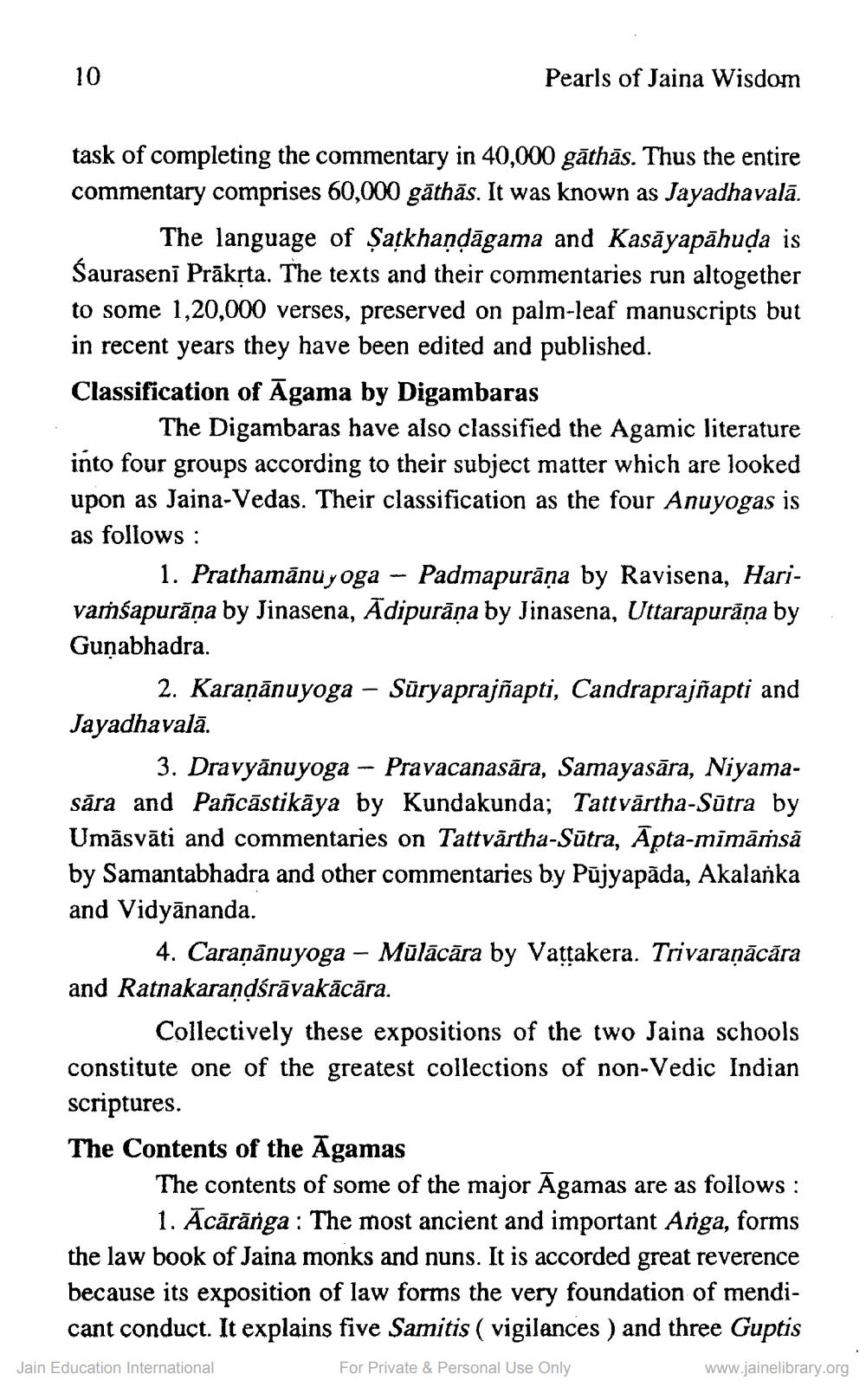________________
10
Pearls of Jaina Wisdom
task of completing the commentary in 40,000 gāthās. Thus the entire commentary comprises 60,000 gathās. It was known as Jayadhavalā.
The language of Satkhaṇḍāgama and Kasāyapāhuḍa is Śauraseni Prākṛta. The texts and their commentaries run altogether to some 1,20,000 verses, preserved on palm-leaf manuscripts but in recent years they have been edited and published.
Classification of Agama by Digambaras
The Digambaras have also classified the Agamic literature into four groups according to their subject matter which are looked upon as Jaina-Vedas. Their classification as the four Anuyogas is as follows:
-
1. Prathamānu yoga Padmapuraṇa by Ravisena, Harivamsapurāṇa by Jinasena, Adipurāṇa by Jinasena, Uttarapuraṇa by Guṇabhadra.
-
2. Karaṇānuyoga – Sūryaprajñapti, Candraprajñapti and Jayadhavalā.
3. Dravyānuyoga – Pravacanasāra, Samayasāra, Niyamasāra and Pañcāstikāya by Kundakunda; Tattvärtha-Sūtra by Umäsvāti and commentaries on Tattvärtha-Sūtra, Āpta-mīmāṁsā by Samantabhadra and other commentaries by Pujyapāda, Akalanka and Vidyananda.
4. Caraṇānuyoga – Mūlācāra by Vaṭṭakera. Trivaraṇācāra and Ratnakaraṇḍśrāvakācāra.
Collectively these expositions of the two Jaina schools constitute one of the greatest collections of non-Vedic Indian scriptures.
The Contents of the Agamas
The contents of some of the major Āgamas are as follows: 1. Acārānga: The most ancient and important Anga, forms the law book of Jaina monks and nuns. It is accorded great reverence because its exposition of law forms the very foundation of mendicant conduct. It explains five Samitis ( vigilances) and three Guptis
Jain Education International
For Private & Personal Use Only
www.jainelibrary.org




